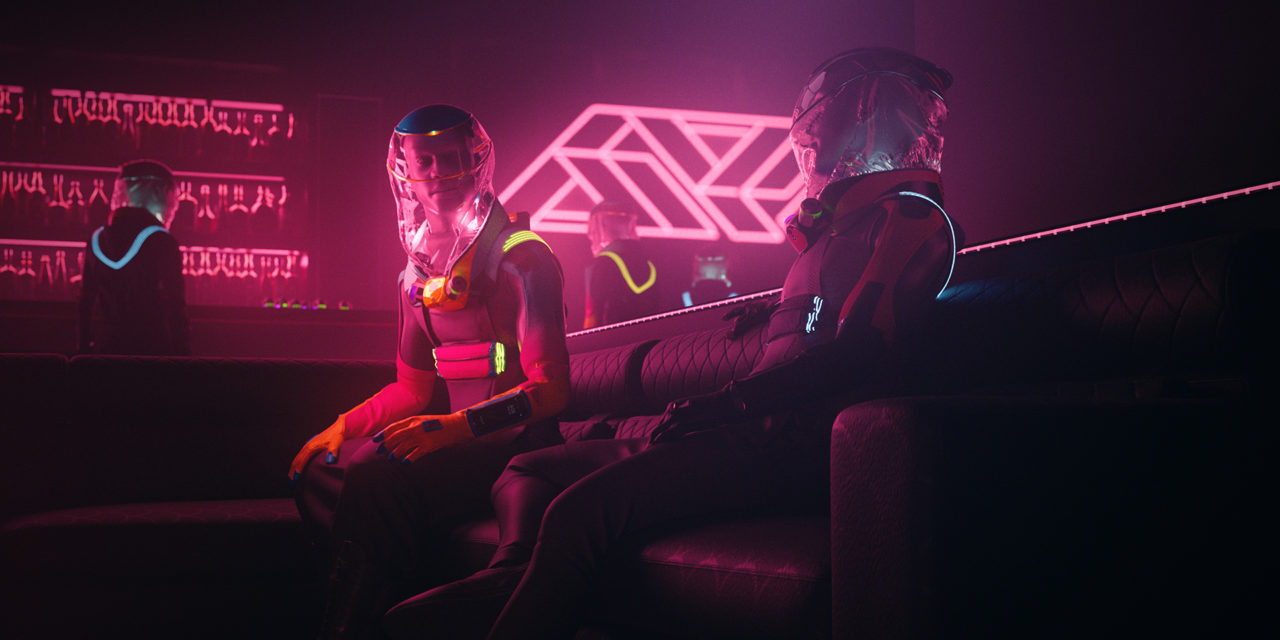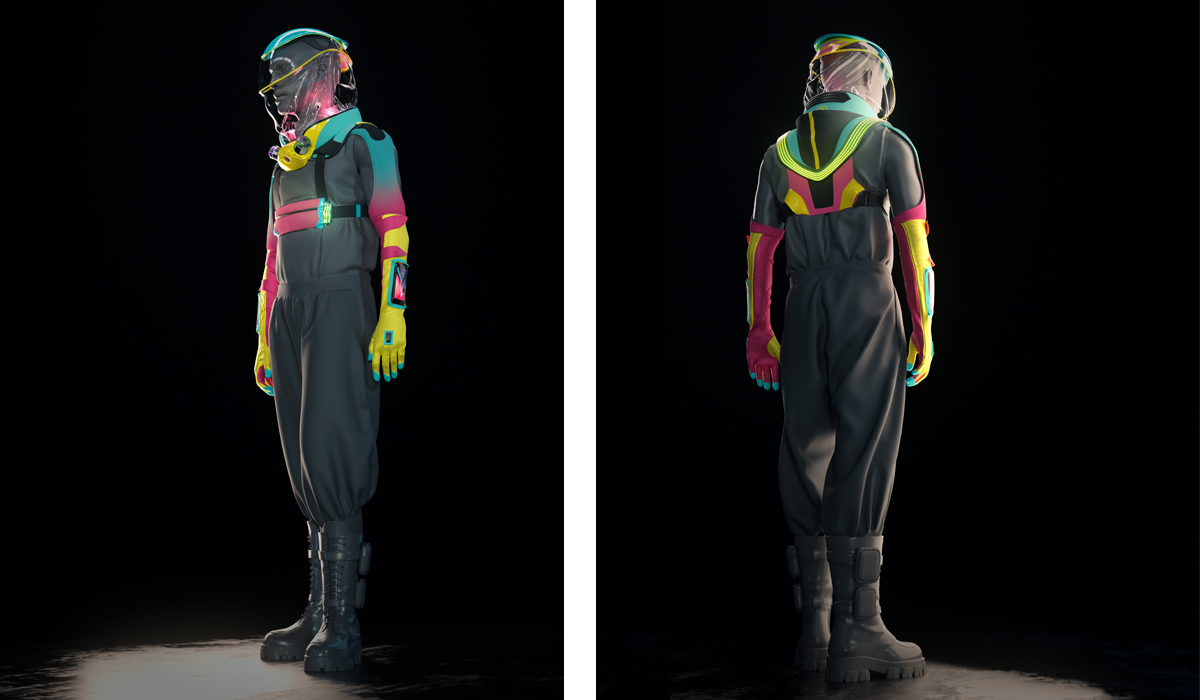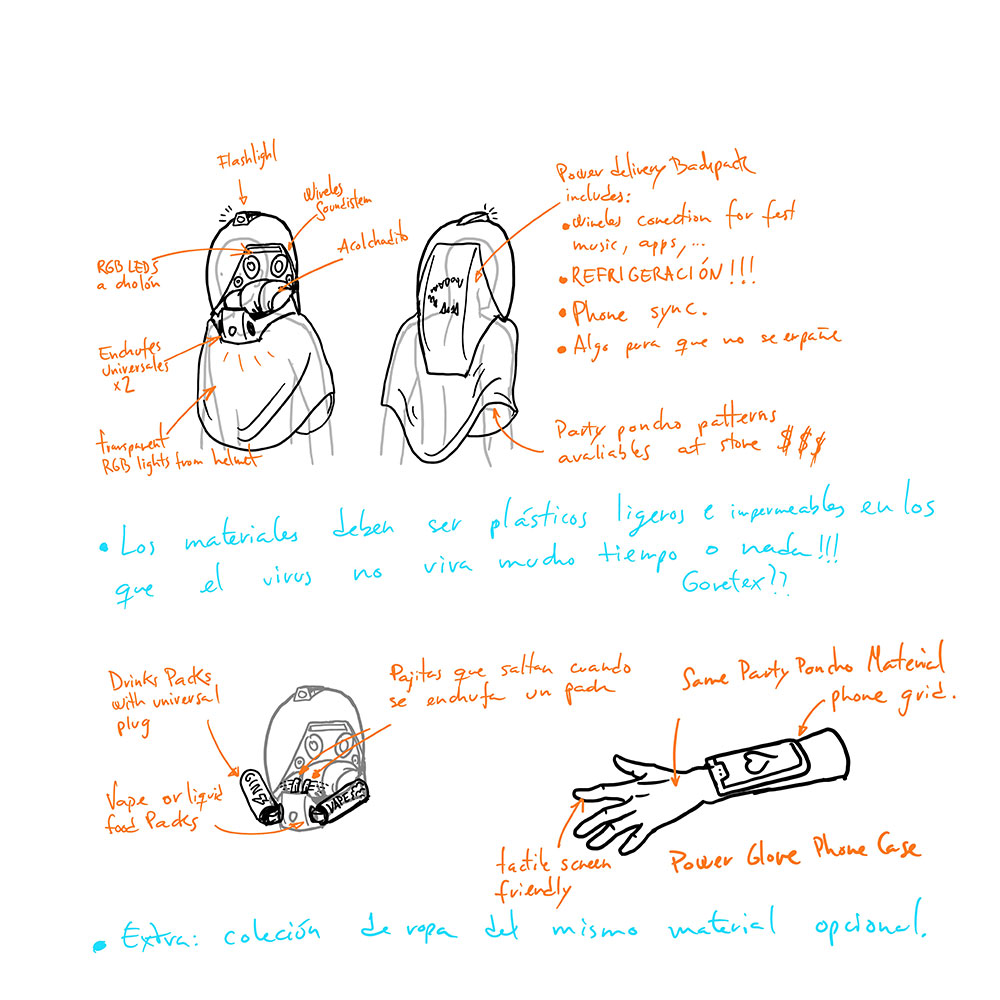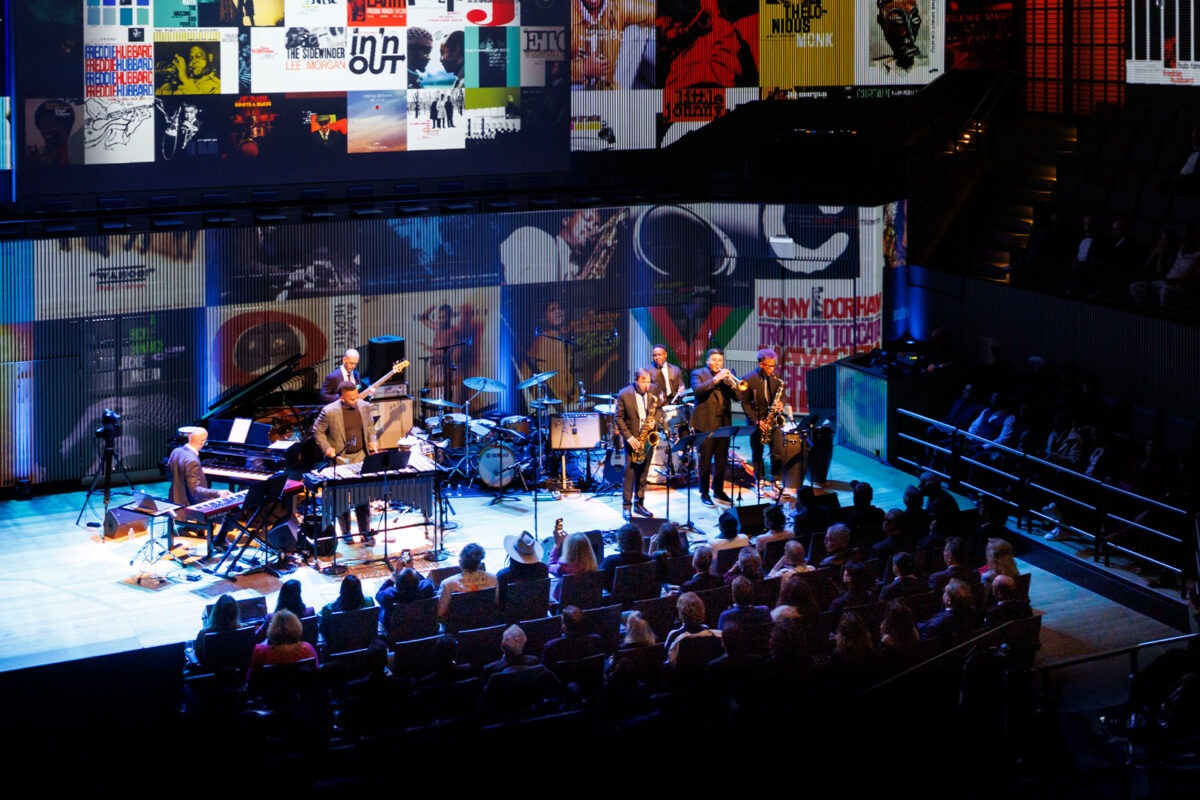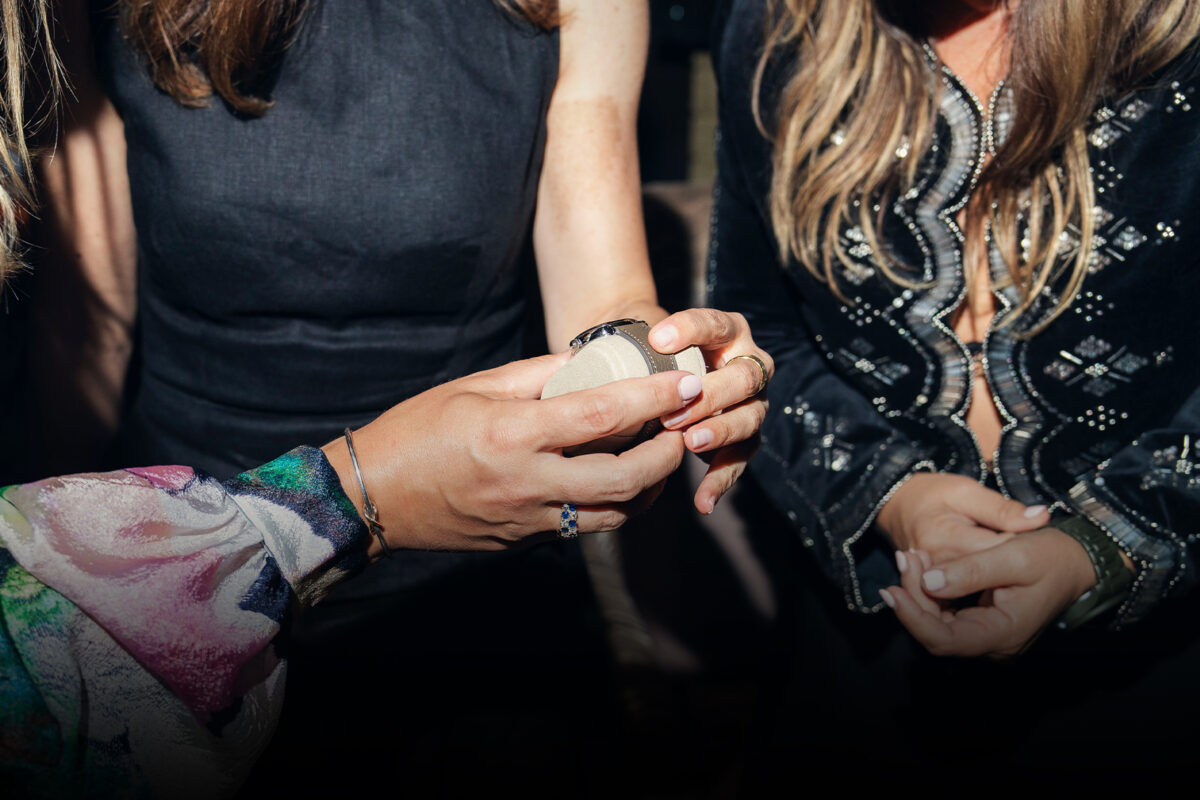An L.A.-based studio has designed a hazmat suit that caters to production studios and partygoers in the middle of a pandemic
Words by MARISA CANNON
An airtight half bodysuit, replete with hazmat-style helmet, currently in development could be the key to getting L.A.’s entertainment industry back on track.
“It was born from concern for our community, and concern about reckless social behavior,” says Miguel Risueño, head of inventions at Frogtown-based Production Club, a creative studio specializing in experiential events with clients including Amazon and YouTube. “We foresee a high adoption rate as Micrashell addresses a major human need that requires a prompt solution. We’ve had various industries like film, construction and more reach out as they see the potential for Micrashell to alleviate the impact of Covid on their industries,” Risueño added.
Once ready, the plan is to release a B2B model so that the cost and responsibility lies with the corporations, venues and entertainment groups to provide protective clothing and proper sterilization for any shoots, events, concerts and conferences.
With Production Club’s expertise in live events in which thousands of people gather together in close proximity, they designed the suit with a party environment in mind, so you will find a built-in sound system, wireless voice communication and system for drinks and vapes via a snap system that uses magnets and plug-in cells that fit the shape of the disposable canisters.
“After witnessing the events industry fall into an unprecedented recession, and seeing large groups of people ignore social distancing directives in order to go out and party, we felt obligated to address both issues and find a solution that benefited all,” Risueño added.
Made from high-performance, durable fabrics, the “top-only” suit design allows users to wear normal clothes and allows for close professional and social interactions without the risk of being exposed to respiratory infection. Using the washroom and even intercourse are possible without removing the suit the studio assures.
Further features consist of an integrated wireless voice communication system, allowing users to control the audio levels of external sources themselves, as well as modifying how their own voice is presented to others in real time. A mixture of screens and LED lights allows users to communicate messages to one another, as well as their mood, needs and desires. A rainbow lighting chase effect across the suit can express joy, for instance, while a static red light might mean you’re occupied, or a green light would express a “resting” state.
Users can also link their phone to the suit’s built-in camera system so it can take photos and videos from another angle, while a “chest eye” system allows them to see in real time things that your suit or helmet might not be able to. An internal sound system plays music in three modes: dry (directly streamed from a single source such as a DJ), wet (as an emulation of the room’s sound based on psychoacoustics), or as a pass-through from the room via the suit’s embedded microphones.
Based between Spain and Los Angeles, the team has worked in 12-hour shifts to develop the suit’s design in an effort to create a solution for those whose professions depend upon being in close proximity with others.
A version of this article previously appeared on Globetrender, whose Future of Travel in the Age of Coronavirus report will be out in early June.
May 14, 2020
Discover more CULTURE news.

